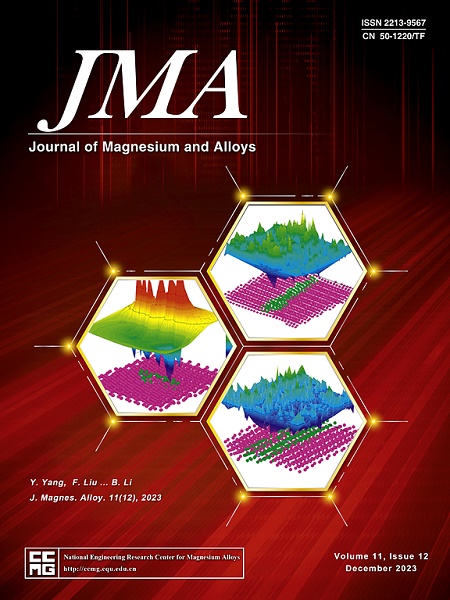生物医学Mg-2wt.%Zn合金在胆道环境下的体内外降解行为研究
IF 15.8
1区 材料科学
Q1 METALLURGY & METALLURGICAL ENGINEERING
引用次数: 0
摘要
镁及其合金最初应用于胆道手术。目前,关于镁在胆汁环境中的降解行为的研究报道很少。因此,深入研究Mg及其合金在胆汁中的降解行为,有利于Mg在胆道手术中的进一步应用。本研究系统地研究了HP-Mg (HPM)和Mg-2 wt.%Zn (MZ2)合金在人胆汁和汉克斯平衡盐溶液(HBSS)中的降解行为。将MZ2合金胆道支架植入猪总胆管,研究MZ2合金在体内的降解行为,验证MZ2合金在胆管内降解的生物安全性。发现MZ2合金在胆汁中形成的降解产物层由外到内依次为有机物(脂肪酸等)、磷酸钙镁和Mg(OH)2/MgO三层。多层降解产物层减缓了Mg基体的腐蚀。在支架植入的21天内,MZ2支架降解率约为0.83 mm/y,管径未出现堵塞和狭窄,胆汁引流功能正常。本文章由计算机程序翻译,如有差异,请以英文原文为准。
Research on the degradation behaviors of biomedical Mg-2 wt.% Zn alloy under a biliary environment in vitro and in vivo
Magnesium and its alloys have been initially applied to biliary tract surgery. Currently, few reports on the degradation behavior of magnesium in the bile environment were investigated. Thus, in-depth research on the degradation behavior of Mg and its alloys in bile is beneficial to the further application of Mg in biliary tract surgery. In this study, the degradation behavior of HP-Mg (HPM) and Mg-2 wt.%Zn (MZ2) alloys in human bile and Hanks balanced salt solution (HBSS) was systematically investigated. The MZ2 alloy biliary stent was implanted into the porcine common bile duct to study the degradation behavior of MZ2 alloy in vivo, and to verify the biosafety of MZ2 alloys degradation in the bile duct. It was found that the degradation product layer formed by MZ2 alloys in bile consisted of three layers, including organic matter (fatty acid, etc.), calcium and magnesium phosphate, and Mg(OH)2/MgO, respectively from the outside to the inside. The multi-layered degradation product layer slowed down the corrosion of the Mg matrix. During the 21 days of stent implantation, the degradation rate of the MZ2 stent was about 0.83 mm/y, there was no blockage and stenosis of the tube diameter, and the bile drainage function was normal.
求助全文
通过发布文献求助,成功后即可免费获取论文全文。
去求助
来源期刊

Journal of Magnesium and Alloys
Engineering-Mechanics of Materials
CiteScore
20.20
自引率
14.80%
发文量
52
审稿时长
59 days
期刊介绍:
The Journal of Magnesium and Alloys serves as a global platform for both theoretical and experimental studies in magnesium science and engineering. It welcomes submissions investigating various scientific and engineering factors impacting the metallurgy, processing, microstructure, properties, and applications of magnesium and alloys. The journal covers all aspects of magnesium and alloy research, including raw materials, alloy casting, extrusion and deformation, corrosion and surface treatment, joining and machining, simulation and modeling, microstructure evolution and mechanical properties, new alloy development, magnesium-based composites, bio-materials and energy materials, applications, and recycling.
 求助内容:
求助内容: 应助结果提醒方式:
应助结果提醒方式:


